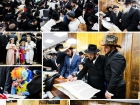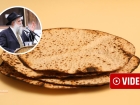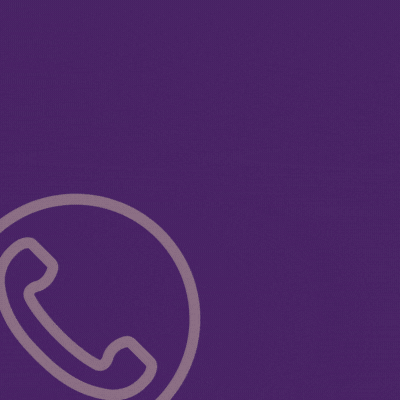Shlichus or Something Else?
The following article is published in the new Tishrei addition of N’shei Chabad Newsletter. Apparently, select portions of this article were circulated online and on social media, which left many readers with the wrong message. For the sake of clarity and honesty we share with you the article in its entirety. Written by Rabbi Mordechai Lipskier • Full Article
Written by Rabbi Mordechai Lipskier
At the groundbreaking for a Chabad yeshiva not long ago the dean opened his speech with, “Every year, this yeshiva educates 150 students who will eventually move out on Shlichus!” His words were met with resounding applause. But I must admit that I was saddened. Not only because his statement was false, but because his words embodied a major injustice to the students in his yeshiva.
Over the past 70 plus years Chabad has become recognized as the symbol of Jewish outreach, so much so that our very identity has become synonymous with Shlichus. This is true not only from an outsider’s view but from within our own communities as well. “You’re a farmer” is a familiar taunt given to someone who doesn’t move out on Shlichus. To be a chossid, we argued, you must go out on the Rebbe’s Shlichus.
There’s no doubt that our Shluchim have changed the world for the better and are indispensable. There’s also no question that the motivation to go out on Shlichus is due largely to the way we educate our children with the Rebbe’s vision. Our families and educational institutions have successfully trained the Rebbe’s army of Shluchim. And it goes without saying that there’s still a need for new Shluchim.
But it’s time for a reality check.
What percentage of our boys and girls are going out on Shlichus these days?
A fraction of the number that used to.
This phenomenon may be due to several factors-including fewer available Shlichus positions because of the number of Shluchim we already have ka”h – and doesn’t reflect a lack of interest or motivation. But the fact remains: The majority of our young couples are settling in frum communities and working regular jobs.
In Their Minds
If we continue to live in denial, convincing ourselves and our children that a Chabad chossid is exclusively someone who moves out on Shlichus and that most of our children will in fact do so, we will fail our children, the Rebbe and the world.
Currently, our youth face two major challenges.
The first one is that-knowingly or not-they perceive Shlichus and business as two antithetical paths. All our values, they believe, have an ultimate goal: going out on Shlichus. If we succeed as chassidim and go on Shlichus, then those values are important and useful. If we don’t, we’ve failed as chassidim and joined another team. And, they conclude, on this other team it’s no longer important to dress like a chossid, or behave like one. After all, my fate is decided: I’m not a real chossid anyway.
The reality of this attitude hit me hard when I saw a flier advertising job training for Chabad boys. The flier design included silhouettes of several young men walking to work. You couldn’t see tzitzis nor hat or jacket on any of them. The well-meaning organizer was unwittingly sending a message to his audience: When you go into the business world you’re no longer a chossid.
The second challenge is that our youth-even those who want to do what’s right even as a baal habos-are simply not equipped to deal with the world. We’ve trained them for Shlichus, not for living as a chassidishe baal habos/teh. It’s like training a man as a paratrooper and then sending him to the Navy. Many of the core principles may be the same, but they weren’t taught how to apply them.
Two Brigades
In the winter of 1952, the Rebbe wrote a letter of appeal for Yeshivas Tomchei Temimim. In it the Rebbe celebrates the success of the yeshiva. “…Today, many hundreds of our students serve as Rabbanim; Roshei Mesivtos and Roshei Yeshivos; shochtim; as well as other positions in holy work in prominent Jewish communities. And also those who engage in others areas for parnassah still do what they can, each according to his capabilities, in the field of spreading Torah and yiras Shamayim, and take leading roles in strengthening Yiddishkeit wherever they live.” (Igros Kodesh Vol. 7 pg. 65)
The Rebbe was proud to say that many of his students go into business and still occupy themselves with strengthening Yiddishkeit. Perhaps today it’s time for us to promote, in addition to the importance of Shlichus, this pride as well.
It’s time to train also the second brigade in the Rebbe’s army.
What can we do?
The primary objective of this article is to raise awareness of our current state of affairs. But perhaps we can consider some general suggestions.
It’s time to reawaken a dormant art: The art of being a chassidishe baal habos.
Just like our Shlichus-training permeates every aspect of our education, training chassidishe baalei batim and bal habostehs should do the same.
Core values for every Jew, and especially a chossid, include: Trust in Hashem; studying Torah every day; davening in shul three times a day; performing mitzvos b’hidur; dressing like a chossid; giving tzedakah; farbrenging; and, of course, reaching out to others and strengthening Yiddishkeit. For a baal habos this can mean engaging in mivtza’im activities while on business; inviting non-Torah-observant guests for Shabbos and Yom Tov; and hosting shiurim and farbrengens.
It’s vital that our boys and girls are aware of these values-their beauty, importance and relevance.
There are, baruch Hashem, many yungeleit today who can serve as superb role models of what the Rebbe has in mind for a chassidishe baal habos. These young men and women live their lives with the above values and priorities. Sharing our admiration for these people will have a profound effect on our children.
These people should be added to our list of heroes.
As parents and teachers we can seize opportunities to inculcate the above values. The stories we tell can be about erlicher business people, about fathers and mothers. When discussing topics like b’chol drachecha da’eihu we can make sure to give practical examples and draw on life experiences of people we know. And the conversations at our Shabbos tables can be about hashgachah pratis, or the mivtza’im we did at work, or a story about a friend who did so.
For older boys and girls, the topics for study and farbrengens could include the above-mentioned values. Draw their attention to the countless sichos and letters in which the Rebbe addressed the need for businessmen to study Torah every day and the need for their wives to appreciate this need and encourage it; the importance of trust in Hashem.
Share with them the many ma’amarei Chassidus which discuss the unique role of the businessman in making this world a dwelling place for Hashem. And tell them chassidishe stories that demonstrate our admiration for these “farmers.”
One of the most memorable talks we heard in all our years in yeshiva was when Rabbi Yosef Rosenfeld, Executive Director of Oholei Torah, lectured us on the importance of dressing like a Yid when riding the subway to work. We had never heard this topic addressed before!
Let the message to our children and the supporters of our schools be, “Every year, we educate students who will dedicate their lives to strengthening Yiddishkeit, each with their unique contribution.”
May the efforts of all our troops bring the ultimate victory, the coming of Moshiach now!
476
Join ChabadInfo's News Roundup and alerts for the HOTTEST Chabad news and updates!











































Disagree with the statements that the author makes in the beginning and at the end.
1. We are all shluchim as the Rebbe MHM made all Yidden of our Dor his shluchim. Telling kids they’re not shluchim is turning them away from the Rebbe.
2. In conclusion the articles states “…we educate students who will dedicate their lives to strengthening Yiddishkeit…” which is incorrect again. The Rebbe MHM made it very clear that the latest shlichus (Sicha Chayei Soro 5752) is Kabbolas Pnei Moshiach and this is the latest focus of the shlichus that penetrates and permeates all of a shliach’s activities. Obviously, strengthening Yiddishkeit is one of the aspects but not THE message of the shlichus.
In general be careful in placing your opinions on the Rebbe’s inyonim. Learn the latest sichos, teach them to the children and don’t be ashamed of the Rebbe’s message on Moshiach and don’t be ashamed to publicize the Rebbe as Moshiach. This is the true education.